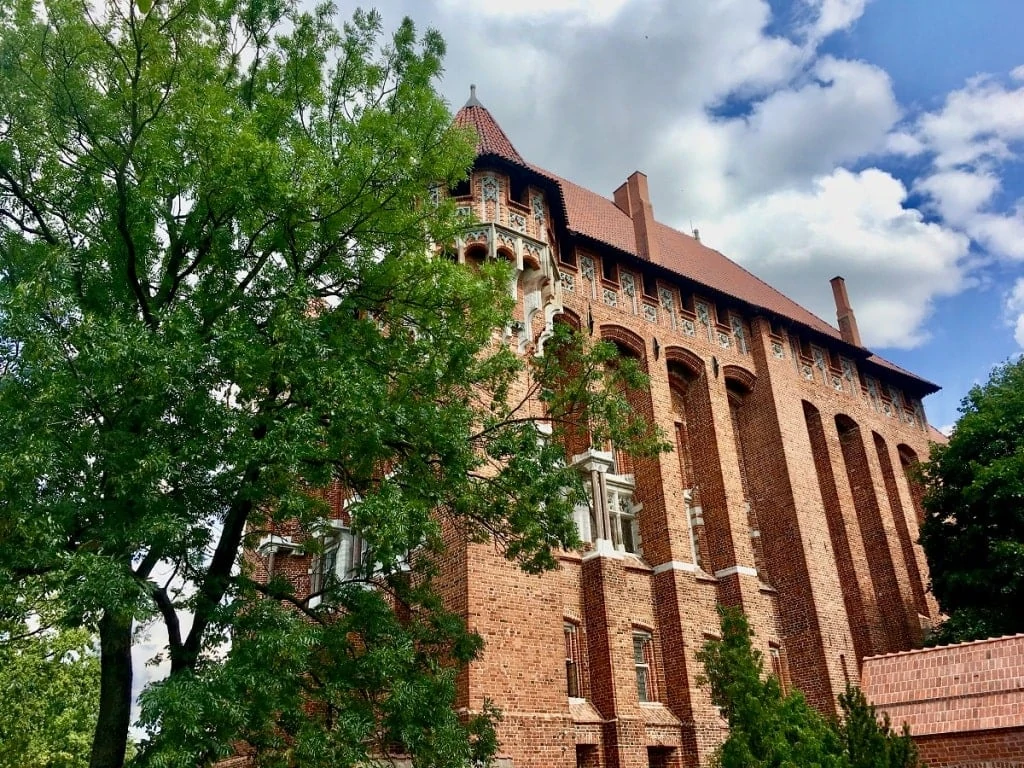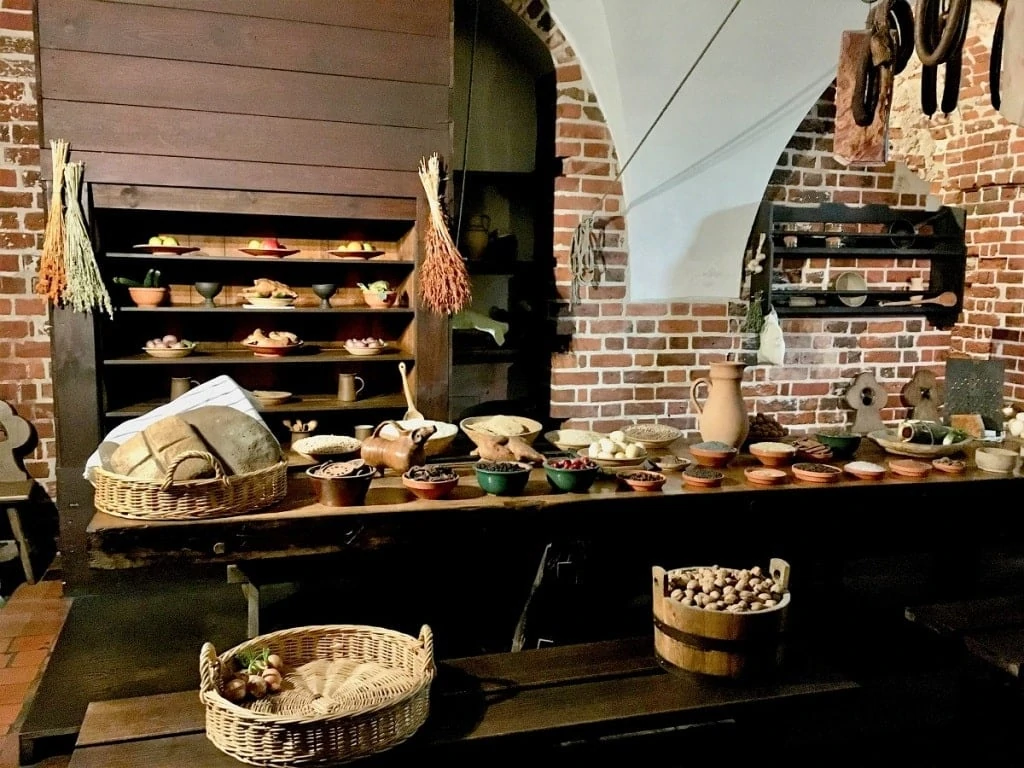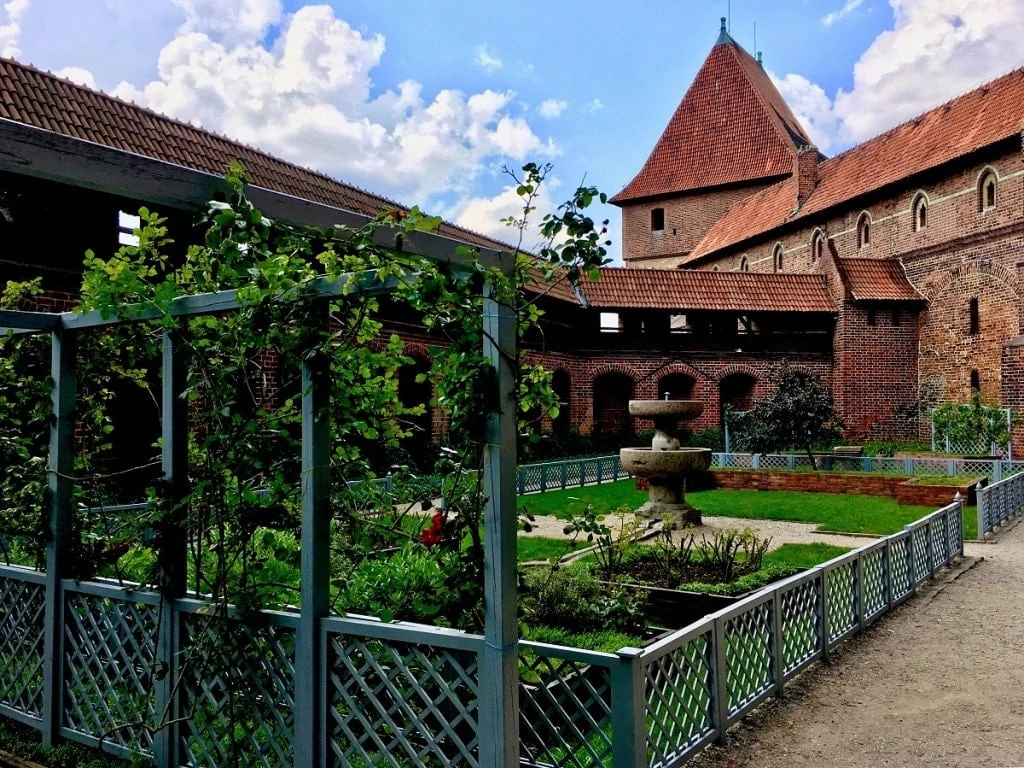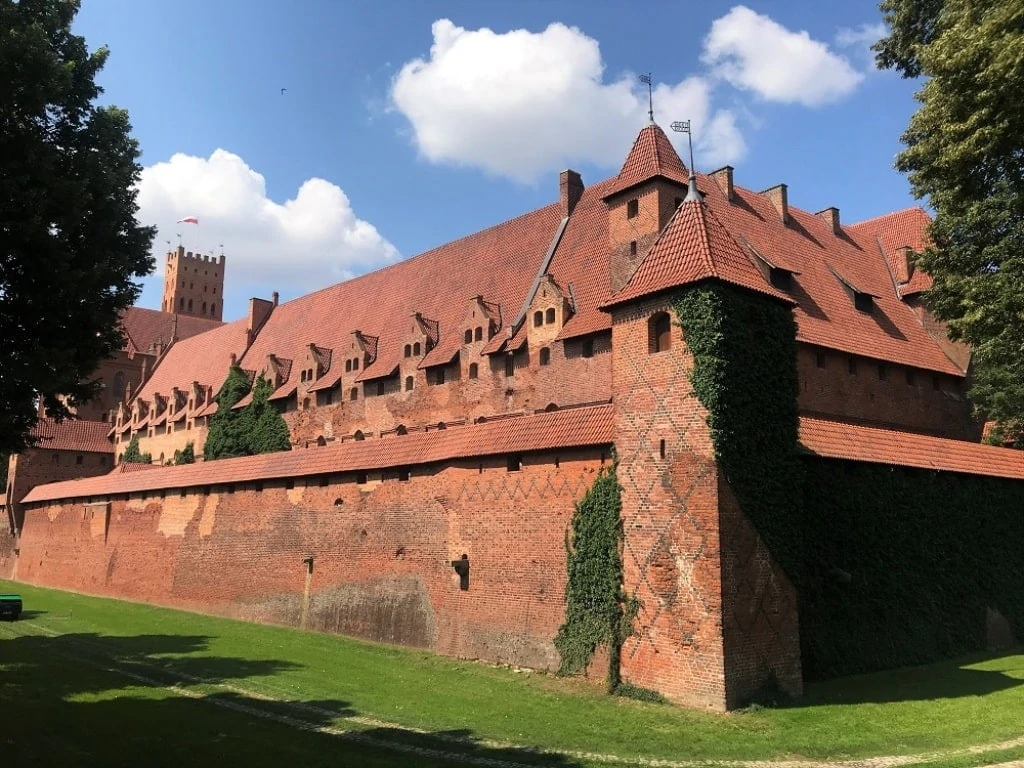It’s fair to say that Europe has an incredible variety of castles. From rough stone fortresses like Slovakia’s Spiss Castle to the ornate baroque chateaux of central France, and the fairytale beauty of Neuschwanstein in Germany, Europe’s castles are as interesting as they are impressive.
But one castle stands out above the rest: Malbork Castle in northern Poland. Designed in an iconic Gothic castle style, Malbork Castle has a fascinating history and is an incredible place to visit. Added to the UNESCO World Heritage list in 1997, it’s definitely one of the best World Heritage castles in Europe, so let’s have a closer look.
A Guide to Poland’s Malbork Castle
History of Malbork Castle

Malbork Castle is located on the Nogat river in northern Poland, not far from the Baltic coast. It was founded at some point in the 13th century by the Teutonic Knights, an order of German crusaders.
They called it Marienburg, in honour of their patron saint, Mary. Construction took around 30 years, though it was expanded several times over the next 200 years to accommodate their rapidly expanding Order.
By the time construction ceased in 1407, Malbork was both the world’s largest entirely brick complex (a title it still holds!) and the world’s largest castle by land area, with the outer walls encircling an impressive 52 acres (21 hectares).
Malbork was an important place for centuries, and there’s a real microcosm of Polish history here. When the Teutonic Order went bankrupt in the 15th century and could no longer afford Malbork’s upkeep, it became a residence for Polish kings.
This arrangement lasted through the Polish kingdom, the Polish-Lithuanian Commonwealth, and a brief Swedish occupation in the 17th century.
In the late 18th century, the area was annexed by the Prussian Empire and Malbork became a barracks and staging post for the Prussian Army.
After Polish independence following World War I, repairs and restoration were started at Malbork. Unfortunately, World War II intervened, and the castle was heavily damaged by both German and Soviet bombs.
Another, final reconstruction work was undertaken after the war, which eventually finished in 2016, and Malbork Castle was designated a UNESCO World Heritage Site in 1997.
Visiting Malbork Castle
Visiting Malbork Castle today is an absolutely fantastic experience. On a bright sunny day, the orange bricks gleam in the sun, and the rich red conical towers reach skyward, reflecting off the nearby river.
The castle is split into three sections: the Upper, Middle, and Lower Castle areas and the audio guide included in your ticket guides you through each one. It’s best to start off in the Upper Castle, the oldest and innermost part of the castle.
Upper Castle

Inside the Upper Castle, you can really see how Malbork was originally built as more of a fortified monastery than a castle.
Traces of the Teutonic Order’s monastic heritage are everywhere, with typical monastic buildings like the Refectory, several chapels, the Chapter House, several dormitories, the impressive Blessed Virgin Mary church, and a huge medieval kitchen in the basement.
There’s also the fascinating Gdanisko, an imposing square tower that sits just above and slightly outside the walls of the inner castle.
It’s one of the oldest buildings in the Upper Castle, and functioned as a prison cell, defence tower … and the castle toilet!
Middle Castle

Below the Upper castle sits the Middle castle. It’s the centre of the Malbork complex, and here again, you can see the influence of the Teutonic Order as warrior monks.
One half of the Middle castle had a military function, while the other was for monastic purposes. On the monastic side, the highlight is definitely the Grand Refectory, the largest hall in the entire castle complex.
The Refectory is decorated with ribbed arched vault ceilings, stained glass windows, patterned brick floors, and painted frescoes on the end walls, and it’s definitely the most impressive spot inside the castle.
Nearby is the infirmary, or hospital, where old or unwell knights could be housed and treated. It was largely self-contained, with its own bathhouse, kitchens, and religious spaces.

The Middle Castle is also home to the impressive Grand Master’s Palace. Built in an ornate Gothic style entirely from bricks, the Grand Master’s Palace is another one of the highlights of Malbork.
Within the Palace, you’ll find two refectories (a large one for summer and a small one for winter), chapels and churches for the Grand Master’s exclusive use, a large bedroom, offices, and several small reception halls.
It’s a fascinating building to wander around and explore, and parts of it are still ornately decorated – largely with grapevine and flower designs, surprisingly!
Lower Castle

Finally, there’s the Lower Castle, which is actually the largest of the three by area. Where the Upper and Middle sections are densely-built fortresses, the Lower Castle was largely unbuilt and left as agricultural land.
It mostly contained fields where the monks would grow their fruits and vegetables, though there were also fish ponds, grazing space for animals, and food production buildings like mills and bakers.
It was almost like a small walled village, existing just outside the higher walls of the Middle and Upper Castles. These days, much of the Lower Castle space is taken up by modern exhibitions, showing what life was like in the medieval era with displays of jousting and combat, traditional foods, and much more.
Getting to Malbork Castle

Malbork Castle is located on the edge of the modern town of Malbork. Getting there from major Polish cities isn’t too tricky, as there are trains available from Gdansk (60-90 mins), Warsaw (3 hours) and Krakow (5-7.5 hours).
It’s best to check the Polish Railways website for the most up-to-date schedule information, and where you can also buy tickets online. The castle is about 20 minutes walk from the station.
Long-distance buses from Gdansk are also available. If you’re coming by car, it’s best to park in the town and walk over. There are quite a few parking lots on the northern side of the river, but it’s recommended to avoid those if possible as they’re notorious for over-charging.
Opening Hours and Tickets for Malbork Castle

The castle itself is open every day from 9 am – 8:30 pm, aside from a handful of holidays like New Year’s Day, Christmas, Easter and so on. Entry tickets have two options: the Green Route, which just covers the castle grounds, and the Historic Route, which includes the interiors of all the buildings in the Upper and Middle castles.
Green Route tickets are currently 20 PLN (~$5.40 USD), while Historic Route tickets are 47 PLN (~$12.60 USD). Both tickets include an excellent audio guide in various languages. Discounts and family tickets are available.
Note that the strongly recommended Historic Route is closed on Mondays, so it’s best to visit Tuesday through Sunday.
A full exploration of the Historic Route takes at least four hours if you listen to most of the audio guide, so be sure to bring comfortable walking shoes and some water.
It’s also worth packing a few snacks, as the food stalls inside the castle are quite pricey by Polish standards.
Lastly, be sure to bring some cash. The only ATMs available nearby are privately-owned machines, dispensing cash at very poor exchange rates and with high fees.
Bio: Joel is a digital nomad and blogger, originally from Sydney Australia. He runs World Heritage Journey, a blog and YouTube channel dedicated to visiting and exploring UNESCO World Heritage Sites. Joel has visited over 500 of the 1121 UNESCO World Heritage sites and is a keen student of history, architecture, conservation, and the environment.
